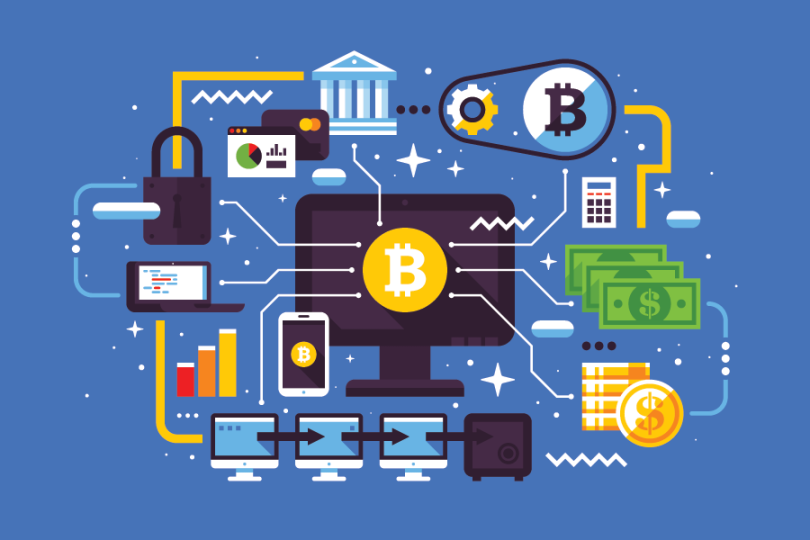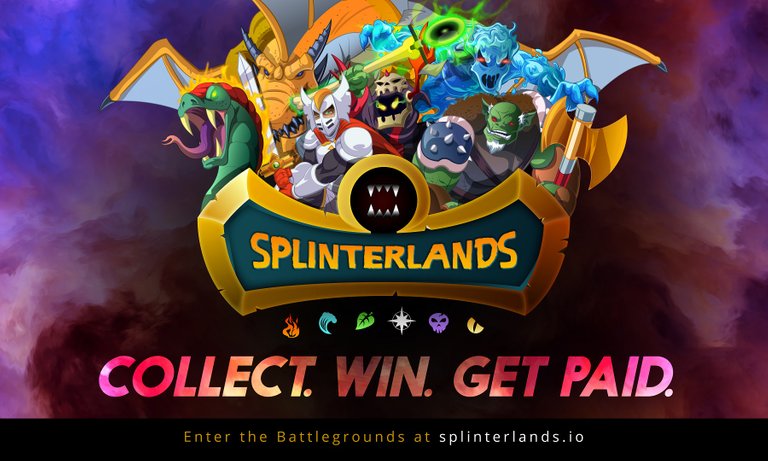Video games are evolving all the time, and in the last few years, we’ve seen the exciting rise of blockchain games, also known as pay-to-earn games. By incorporating things like cryptocurrencies and NFTs into their core gameplay structure, they allow players to not only spend real money but earn it too. How cool is that? I mean, who wouldn't want to earn money while playing video games?
There's a lot to talk about regarding this new genre of games, so if you're excited to know more, you're in the right place. And hey, if you have no idea what words like cryptocurrency, blockchain or NFT mean, don’t shy away just yet. We’ll answer all your questions down below.
Let’s get stuck in.
About blockchain technology

When it comes to pay-to-earn games, blockchain technologies like cryptocurrencies and NFTs are integral to how they work. If you’ve never heard of these things or have heard of them and are still confused about what they are, we’ll try to explain as best we can.
Cryptocurrencies

Up first, we’ve got cryptocurrencies, which are currencies that essentially use digital files as their “money” instead of physical coins or banknotes. Bitcoin is the most popular of these, though there are thousands of other ones out there, all with different values dependent on exchange rates with standard currencies like the US dollar. These cryptocurrencies are popular because they’re decentralized and work thanks to distributed databases known as blockchains, meaning a trusted third party isn’t required for a secure transaction to take place.
Lost yet? Don’t worry. For the purposes of this article, all you really need to know is that these cryptocurrencies exist, and they can be used for buying and selling things online.
NFTs

Next, let’s talk about NFTs, or non-fungible tokens. NFTs are essentially certificates of authenticity that can be used to prove that you own a particular digital asset. They are often tied to music, digital art, and videos, and can be extremely valuable. We won’t overcomplicate things, so we’ll leave it at that. That’s all you really need to know anyway.
How does blockchain technology relate to pay-to-earn games?
So, you’re probably wondering – how do these things relate to pay-to-earn games? Well, it’s quite simple really.
Alongside the digital assets we listed, NFTs can also be associated with virtual objects in video games. Players can then acquire these NFTs in some manner and go on to either trade them with others or exchange them for various cryptocurrencies. Pretty nifty, right?
Virtual economies have been around for a long time in video games, but this is truly something new. By simply playing a game and making some good choices, players have the potential to earn large sums of real cash rather than in-game funds that have no value in the real world. It’s no wonder these games are so popular.
Examples of pay-to-earn games

With so many different pay-to-earn games out there, it can be difficult to know where to start, so let’s go over some of the best ones as rated by crypto enthusiasts online.
Axie Infinity
/cdn.vox-cdn.com/uploads/chorus_asset/file/22924743/0_mKVkWxi7ubrmq96K.jpg)
Axie Infinity is arguably the biggest NFT-based game around, with over 2 million players logging on daily to get a piece of the action. It’s based around little creatures called Axies that players can collect, raise, breed, and fight with – think Pokémon, but cuter.
As you may have guessed, these Axies can be traded as NFTs, which is why people enjoy the game so much. The stronger an Axie, the more it’ll be worth, so players will often spend a lot of time and effort on their pets to increase their value, ultimately selling them for profit. Not a bad way to make money if you’re having a load of fun at the same time!
The Sandbox

The Sandbox originally started as a simple creative building game but transitioned to the pay-to-earn model in August 2018. Players can essentially create whatever they want from scratch out of voxels, and then sell those creations on to others as digital assets if they so choose.
Some of the creations on the marketplace right now are insane, and it’s clear that a lot of effort has gone into them. If you have a creative mind and are interested in NFTs and crypto, this game is a great starting point, so we’d recommend checking it out.
CryptoKitties

As the name implies, CryptoKitties is a pay-to-earn game revolving around digital cat NFTs. There isn’t a whole lot to the gameplay other than raising and breeding cats, but it’s still appealing to many people, making it one of the biggest NFT-based games around. If you love goofy, adorable, and one-of-a-kind cats, then you may very well enjoy playing this one (and making some money too).
Splinterlands

Lastly, let’s talk about Splinterlands. Most NFT-based games are all about trading and battling, and this one is similar, although it has the quirk of being a card game. The cards you collect can be combined, traded, sold, or used to compete against others, so it’s up to you whether you want to build a powerful deck and dominate your opponents or just focus on making some cash.
Pros and cons
Now that we’ve covered pay-to-earn games and looked at some examples, let’s summarize them with a list of pros and cons to help you decide if they’re for you.
Pros:
- Offer the ability to earn real money while playing
- Give artists the ability to create and monetize their work
- Quick payments are possible with secure and safe transactions
Cons:
- Gameplay is often limited to asset creation and trading
- Games can be difficult to set up due to the blockchain technology involved
- Can be expensive to get started
- The crypto market is constantly fluctuating, so you can never be 100% certain of how much your virtual assets are worth
Final words
So, what do you think? Are blockchain games the future of gaming? Will you be trying any out? Let us know down below! There are a lot of different opinions out there on this topic and we’d love to hear your thoughts.
Thanks for reading!






